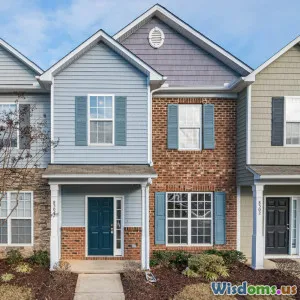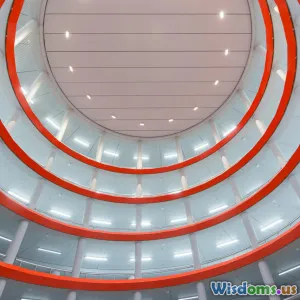
Why Are Tiny Houses Gaining Ground in Urban Housing Solutions?
9 min read Explore why tiny houses are reshaping urban living with affordability, sustainability, and innovative community solutions. (0 Reviews)
Why Are Tiny Houses Gaining Ground in Urban Housing Solutions?
Urban areas worldwide face increasingly complex housing challenges — from rising property prices and overcrowding to environmental concerns and the need for sustainable development. Amid these struggles, tiny houses have emerged as a fascinating alternative in the urban housing dialogue. But what explains their rapid popularity and perceived potential as a solution? This article explores the dynamic growth of tiny houses within cities, diving into socio-economic trends, urban planning shifts, and lifestyle changes.
Introduction: The Urban Housing Crisis and a Tiny Alternative
As people flock to cities for jobs and opportunity, urban housing markets have tightened dramatically. In highly urbanized areas like New York City, London, and Tokyo, average home prices have soared out of reach for many. For instance, the US Census Bureau reported a 30% increase in median home prices in major metros over the last decade, while wages have stagnated for the majority. This growing affordability gap fuels interest in smaller, cost-efficient living spaces.
Simultaneously, environmental urgency demands that urban growth minimizes resource consumption and carbon footprints. Large homes consume more energy and materials — making the ultra-compact tiny house a promising eco-friendly alternative.
Beyond economics and sustainability, tiny house living promotes flexibility, simplicity, and community-centric approaches, aligning with contemporary urban lifestyle priorities.
What Defines Tiny Houses?
Tiny houses typically refer to dwellings under 400 square feet, constructed either on wheels or permanent foundations. They emphasize clever space utilization, multifunctional furniture, and minimalistic design principles.
While often associated with rural or suburban settings, an increasing number of tiny homes are appearing within city limits — from repurposed backyards and vacant lots to community micro-villages.
Two noteworthy trends:
-
Tiny Houses on Wheels (THOWs): Mobility allows residents to adapt to housing regulations and transient needs.
-
Micro-Communities: Compounds of tiny houses that foster shared amenities and a stronger sense of urban community.
Economic Drivers: Affordable Housing in the Face of Rising Costs
The Affordability Crisis
One of the most compelling reasons tiny houses gain favor is their cost efficiency. Traditional urban homes, condos, or apartments increasingly require upfront capital, mortgages, or rent commitments unreachable for many.
According to the National Association of Realtors, the median home price in U.S. urban centers is approximately $375,000, whereas tiny houses can cost between $30,000 and $80,000.
This significant price difference opens new housing possibilities for:
- Young professionals and students: Seeking independence without financial strain.
- Retirees: Downsizing to reduce expenses.
- Low-income individuals: Offering a pathway out of homelessness or into secure rental alternatives.
Reducing Hidden Costs
Tiny houses also save money through lowered utility, maintenance, and property tax expenses. Many tiny homes incorporate energy-efficient appliances, solar panels, and composting systems. These features reduce ongoing costs and lessen reliance on city services, which can be problematic in struggling urban areas.
Example: The Covelo Tiny House Project in California
In Mendocino County, the Covelo project provides affordable tiny house rentals combined with communal facilities. They have helped rehabilitate an economically disadvantaged area while providing stable housing for residents.
Environmental Sustainability: Living Small to Impact Large
Urban environments contribute heavily to global carbon emissions, consuming significant energy resources for heating, cooling, and lighting.
Tiny houses make sustainability tangible by minimizing:
- Material Use: Smaller footprint means fewer building materials and less embodied energy.
- Energy Consumption: Less space to heat and cool reduces greenhouse gases.
- Land Use: Tiny homes occupy minimal land, allowing expanded green spaces or preserving urban biodiversity.
Zero-Waste and Green Innovations
Many urban tiny house initiatives integrate composting toilets, rainwater harvesting, and solar power. Amsterdam’s "Tiny House Village" showcases modular designs built with recycled wood and steel.
Expert Insight
Environmental architect Sarah Williams notes, "Tiny houses illustrate how urban living can shrink environmental impact without sacrificing comfort or quality of life. They serve as laboratories for sustainable innovations we desperately need."
Lifestyle and Social Dynamics: Shifting Values and Urban Design
The Minimalist Movement
Culturally, tiny houses echo a growing trend toward minimalism and anti-consumerism. Many urban dwellers prioritize experiences and community connections over accumulating possessions and large homes.
Social psychologists report increasing satisfaction among tiny house residents tied to decluttered living and reduced financial stress.
Promoting Community Interaction
Interestingly, tight quarters encourage social engagement. Micro-communities create shared outdoor spaces, communal kitchens, and workshop areas, fostering inclusivity often missing in large city landscapes.
Example: The Quixote Village, Washington State
Quixote Village offers tiny houses specifically designed as a transitional homeless community. The architectural design focuses equally on social cohesion and privacy, providing dignity and support.
Urban Planning and Regulatory Challenges
Despite the appeal, many cities face regulatory hurdles—from zoning laws to building codes—that hamper tiny house adoption. However, pioneering cities like Portland and Austin have adapted policies to allow tiny homes in designated areas, enabling experimental urban integration.
Technology and Innovation Enabling Tiny Urban Living
Modern technology facilitates tiny house living through:
- Smart Home Integration: Controls for lighting, temperature, and security maximize comfort in limited space.
- Modular and Prefabricated Construction: Enhances affordability and speed of building.
- Off-Grid Utilities: Solar panels, greywater recycling, and composting can operate independently, especially useful in urban infill sites.
Startups like Boxabl provide foldable tiny homes assembled on site within hours, making urban deployment scalable and efficient.
Conclusion: Toward a Flexible, Sustainable Urban Future
Tiny houses represent more than just small living spaces; they are a multifaceted solution to pressing urban housing challenges. By blending affordability, sustainability, and community-first design, tiny homes address economic inequality, environmental urgency, and evolving lifestyle needs.
While obstacles remain—particularly regulatory and social acceptance—the momentum behind tiny house urban solutions signals a shift in how we imagine city living. Through thoughtful integration, tiny houses can contribute meaningfully to diverse, resilient, and inclusive urban landscapes.
Urban planners, policymakers, and residents alike can draw profound lessons from this movement. Considering a smaller footprint may well be the key to broader urban harmony and innovation.
References & Further Reading:
- National Association of Realtors, 2023 Housing Statistics
- "The Tiny House Movement: Transforming Urban Spaces," Urban Studies Journal, 2022.
- Environmental Architect Sarah Williams, Interview, July 2023
- Quixote Village Official Project Overview, www.quixotevillage.org
- Boxabl Homes, www.boxabl.com
Rate the Post
User Reviews
Popular Posts


















